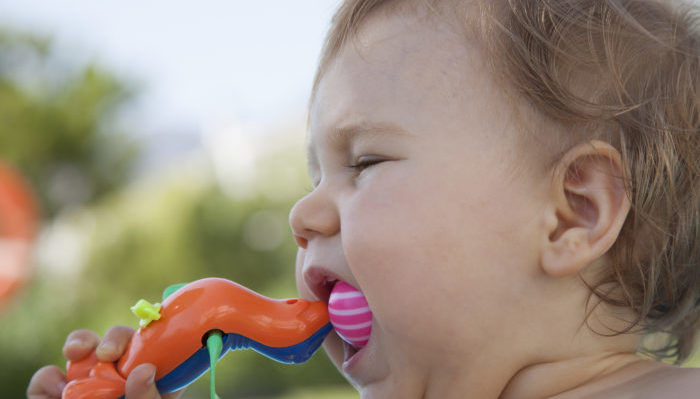All plastics are not created equal. While households are filled with many plastics, many people are not aware what they are really made of, the intended use, or if they are safe. Some plastics are made with chemical compounds so they are great to store files, clothing, and keepsakes. Other plastic compositions are made for toys, for food storage, or for water bottles.
Most plastics contain some chemical additives in order to change the plastic for its intended use. Some additive make the plastic UV resistant, while others make it softer. Plastic additives such as BPA (bisphenol-A) or the plastic softener phthalate are harmful to our health. A Columbia University study determined that children exposed to phthalates while in the womb resulted in a lower IQ score. These chemical additives have been linked to cancer, damage to the reproductive system, as well as brain and behavioral changes. Lastly, overtime harmful plastic additives can easily leach into the food and water they contain. Explore the different ways plastics are manufactured, their numbering and coding system, which plastics are safe, and handling tips.
Plastic Safety By The Numbers- What To Avoid
 The plastic recycling triangle symbol contains a number stamped inside. The number ranges from 1 to 7. It may also contain some letters underneath the symbol. It is typically shown on the bottom of a toy, container, or bottle. So what do these numbers and letters mean?#3 and/or “PV” or “PVC”
Also known as polyvinyl chloride or vinyl. PVC is often mixed with a chemical compound phthalates to make plastic more pliable. Phthalates was banned in children’s toys manufactured after 2009 because of its toxicity. This ban also covered raincoats, toys for children older than 12, shower curtains, and inflatable beach toys. #3 also contains DEHA (Diethylhydroxylamine), a carcinogenic linked to liver damage and bone loss. Caution: You may still find these items at flea markets, garage sales, thrift stores, or as hand-me-downs.
#6 or “PS”
Also known as polystyrene or Styrofoam and are found in disposable cups and plates, and carry out containers. When heated, the chemicals in polystyrene can breakdown and release toxic chemicals into your food, tea, or coffee. Alternative: Use safe microwave containers when heating.
#7 or “PC” or “Other”
Also known as polycarbonate. These rigid and transparent containers are used to store food or may be used in 3 or 5 gallon water bottles. Some frozen and fresh foods are packaged in these containers. Trace amounts of BPA can leach from these containers into the food source, especially when used to store hot foods or liquids. Alternative: Remove the food from the packaged container and place in a microwave safe dish for cooking. Caution: #7 is also found in sunglasses, so don’t chew on the arms!
If You Have To Use Plastic, Which Ones Are Safer?
 Numbers 1, 2, 4, or 5 do not contain BPA and are safer choices if you have to use plastics to store food or a beverage.Look for “BPA Free” stamping on the bottom of containers. Shop for a cloudy or colored or soft plastic. They don’t contain BPA. When in doubt, store foods and liquids in glass or lead free ceramic containers.#1 or “PETE”
This type of plastic is commonly used in water, juice, beer, and soft drink bottles. Cautionary note: While #1 has been classified as being safe, studies published in 2010 and 2012 reported that more research is required to understand whether these containers may leach phthalates into the bottled water or soft drinks. The reports recommended to consume these beverages before the expiration date since storage at room temperature after a year may leach chemicals into the beverages. Alternative: Use glass bottles.
#2 or “HDPE”
This plastic is opaque and is used juice bottles, milk jugs, food storage containers, refillable plastic bottles, and even cereal box liners.
#4 or “LDPE”
This type of plastic is used in squeezable juice boxes and bottles, make believe toys, and snap-on lids.
#5 or “PP”
Plastic made with this stamping is used in some reusable food containers from companies such as Rubbermaid and Sterilite, toy parts, and trading cards.
